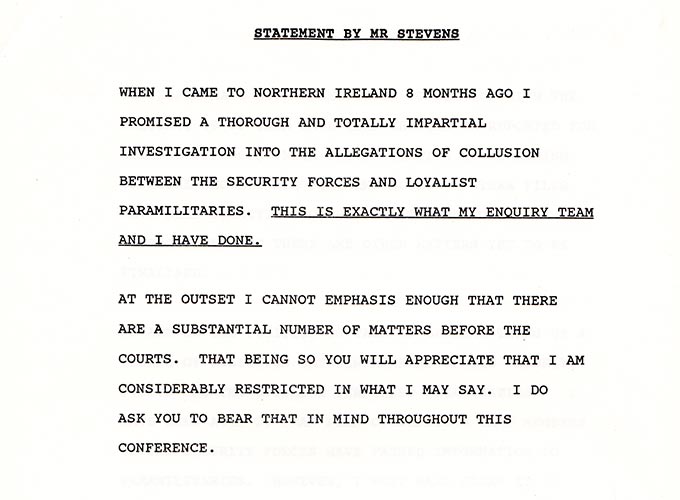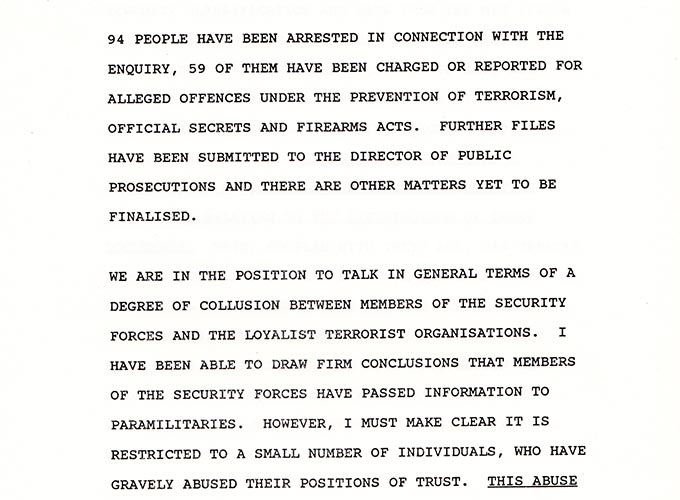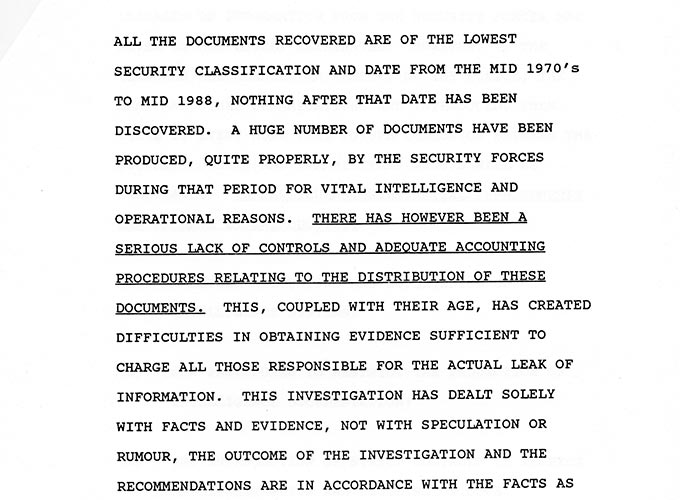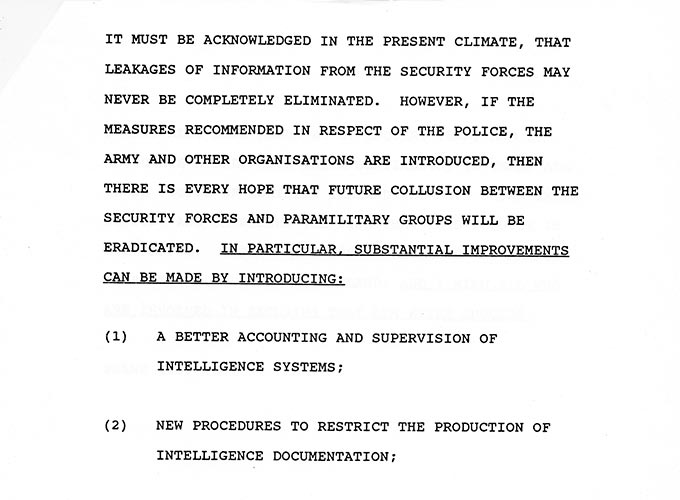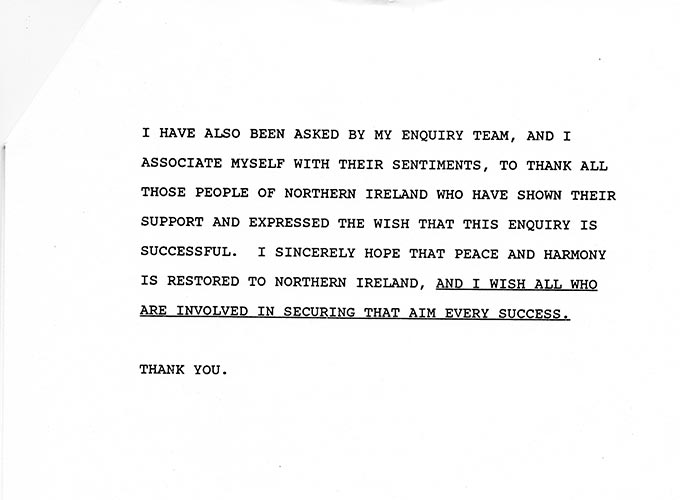Description
In August 1989, Loughlin Maginn was murdered by the Ulster Freedom Fighters (UFF), a cover organisation for the Ulster Defence Association (UDA). Although Maginn had no paramilitary connections, the UFF claimed he was a liaison officer for the Irish Republican Army (IRA). They identified Maginn as a suspect using video surveillance and photocopies of classified intelligence documents compiled by the security forces.
Chief Constable Annesley asked Deputy Chief Constable John Stevens of the Cambridgeshire force to lead an inquiry into the circumstances of Loughlin Maginn’s murder. The Stevens’ team identified two soldiers from the Ulster Defence Regiment (UDR) in connection with the murder and in March 1992, they were jailed for life for providing information to the UDA. Stevens’ team traced the theft of hundreds of terrorist recognition aids (photomontages of suspects) from Dunmurry Police Station to another battalion of the UDR. Two soldiers were convicted of the theft of photomontages and another soldier was charged with supplying and servicing weapons for the UDA. In May 1990, a summary of Stevens’ final report was published. The report contained 83 specific recommendations including an improvement in the security and management of sensitive documents, better vetting and screening of soldiers and the amalgamation of the UDR with Royal Irish Rangers to form the Royal Irish Regiment.
In April 1993, Stevens began a second inquiry into the security forces. In April 1999, his third inquiry focused on the reinvestigations of the killings of solicitor Pat Finucane in 1989 and the student Brian Adam Lambert in 1987. During the three inquiries, 9,256 statements were taken, 10,391 documents recorded (totalling over 1 million pages), 16,194 exhibits seized, 144 arrests made and 94 convictions secured. The Stevens' investigating teams found obstruction from both the Army and elements of the RUC Special Branch. The Stevens' inquiries highlighted a number of forms of security force collusion: the willful failure to keep records, the absence of accountability, the withholding of intelligence and evidence, and instances of agents involvement in murder. Stevens advocated a review of investigative procedures for terrorist offences and better training and accountability for those police officers involved in the investigations. He recommended the establishment of an internal investigation department, a review of exhibit management and better intelligence systems.
Links
- CAIN organisations: UDR
- CAIN organisations: UDA
- CAIN: Summary of Stevens report findings
- CAIN: Chronology of Stevens inquiries
- BBC News: Stevens Inquiry 3 - findings at a glance
- Hansard: Stevens inquiry debate
- BBC Panorama clip: Did the state collude with paramilitary killers?
- BBC News: De Silva report on Finucane case turns spotlight on MI5

